
Best Earth Images of the Week Jan. 25, 2013
Super-sensitive tech

The nighttime viewing capabilities of the Suomi NPP satellite are giving earth scientists new views of the planet's surface once the sun goes down.
An image taken on Sept. 27, 2012, and released recently by NASA's Earth Observatory, shows off the satellite's penetrating gaze with a view of low-level, marine layer clouds off the coast of California. These clouds are invisible to technologies previously used to view nighttime scenes.
[Full Story: Night-Sensitive Satellite Spots Elusive Clouds]
Invader of the cold kind
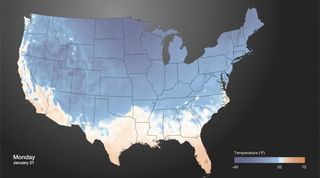
If you live anywhere within the northern two-thirds of the United States, you've probably noticed that it's pretty chilly outside. The plunge in temperatures over the past few days comes courtesy of an invasion of Arctic air that has been captured in a mesmerizing new animation from the National Oceanic and Atmospheric Administration.
The animation, made with weather data from the NOAA/NCEP Real-Time Mesoscale Analysis, begins on Saturday (Jan. 19) with very cold air seen only over the Rockies, Montana, North Dakota, the northern half of Minnesota and the northern portions of New England. Much of the eastern and central parts of the country saw weekend weather that was balmier than usual for mid-January.
[Full Story: Chilling! Arctic Air Invasion Captured in Animation]
Watch for falling rocks

A rockfall shattered a snowy landscape and barely missed a hut full of hikers in New Zealand Monday (Jan. 21).
The steep west face of Mount Dixon at Aoraki Mount Cook National Park fell at about 2:15 p.m. local time, leaving a dark trail of rock and ice across the park's Grand Plateau, the Timaru Herald reported.
[Full Story: Massive Rockfall Rattles New Zealand Park]
Shortlived scare
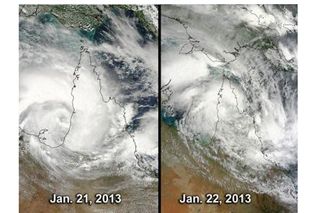
Tropical Storm Oswald formed on Monday (Jan. 21) in the Gulf of Carpentaria off the west coast of Australia's Cape York Peninsula. By the following day, it had already made landfall over the southwestern portion of the peninsula; since then, it has dissipated into a remnant low pressure system.
The entire brief life cycle of the storm was observed from above by NASA's Aqua satellite.
[Full Story: NASA Satellite Spies Quick Birth & Death of Tropical Cyclone]
Inquisitive creature
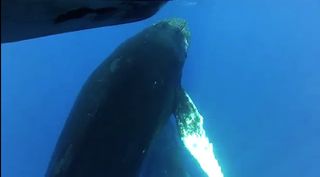
What would you do if an animal the size of a submarine wanted to give you the once-over?
An inflatable boat full of tourists found out recently in Hawaii, when two humpback whales circled their boat for at least 10 minutes, according to a report by Hawaii News Now. The female humpback whale bumped up against the boat as if she were scratching her back, a crew member for the tour company, Captain Zodiac Rafting Expeditions, told the site.
[Full Story: A Whale of a Boat Ride Caught on Video]
Humbling sight
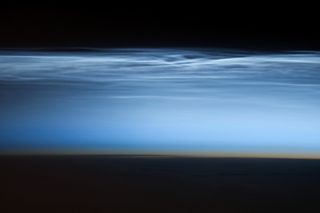
Even when night blankets the land, some clouds high in the atmosphere may still glow, as seen in this photograph taken by a crewmember aboard the International Space Station on Jan. 5, looking down over French Polynesia in the South Pacific.
Known as polar mesospheric or noctilucent clouds, these formations have been spotted from the Northern and Southern Hemispheres on ground, in airplanes and on spacecraft, according to the NASA Earth Observatory.
[Full Story: Astronaut Snaps Beautiful Photo of 'Night-Shining Clouds' ]
Brave souls
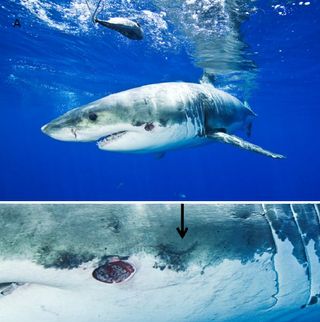
Cookiecutter sharks aren't very neighborly. Like most sharks (or any marine animal, for that matter), cookiecutters roam the ocean looking for food. But unlike typical meat eaters, these sharks don't kill their prey they just take a bite and move on.
And for the first time, scientists have found evidence that these small sharks even go after one of the world's most fearsome predators, the great white shark. Great whites are about 10 times the size of a cookiecutter shark.
[Full Story: Cookiecutter Shark Takes Bite Out of Great White]
Sign up for the Live Science daily newsletter now
Get the world’s most fascinating discoveries delivered straight to your inbox.
Erupting Quartet
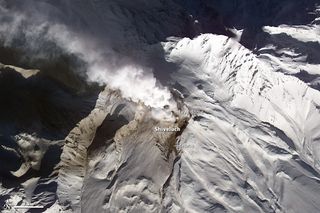
With more than 300 volcanoes crowded into a finger of land roughly the size of California, Russia's Kamchatka peninsula is home to the world's highest concentration of active volcanoes.
Only 29 volcanoes are active, occasionally spilling lava down their slopes or shooting steam and ash into the sky. On Jan. 11, NASA's Terra satellite snapped a picture of a fearsome foursome, as a quartet of Kamchatka's volcanoes erupted at the same time.
[Full Story: Fearsome Foursome of Eruptions Seen from Space]

